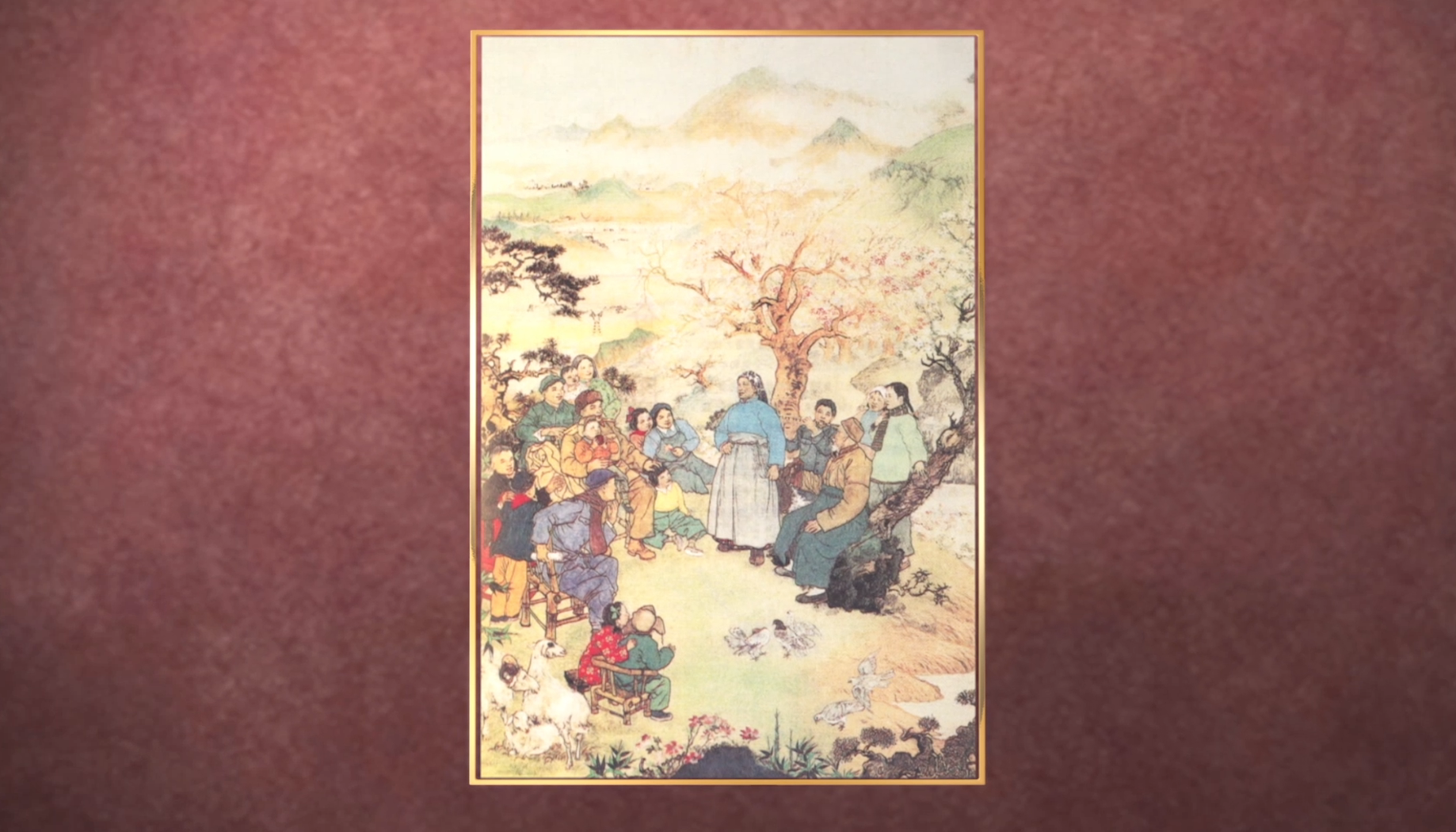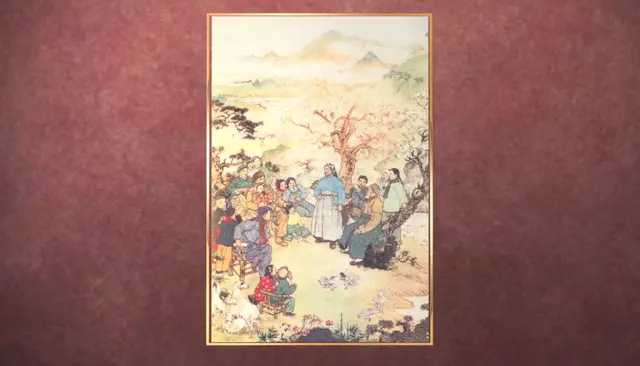02:11

In 1956, China was experiencing a rebirth. After decades of turbulence, people were expressing the need for a better life. China's first Five-Year Plan for economic rehabilitation was being implemented and a young, new China was changing rapidly. The spirit of the nation was transforming. Influenced by the invigorated atmosphere of society, Cheng Shifa created the Chinese painting "Singing the Spring of the Motherland."
"Singing the Spring of the Motherland" depicts a happy scene of an old mother singing in a peach grove and serves as a visualization of “the spring,” or beginning, of China's industrialization.
In 1956, massive reform was occurring within China’s economic model as the first Five-Year Plan was near conclusion and an enormous shift toward socialism was underway. Multiple industrial projects had been developed and agricultural cooperatives had been formed. The country was in the midst of a boom in commerce. China’s premier automobile factory in Changchun was rolling out its first batch of “Jiefang” trucks. Beijing hosted the opening ceremony for the country’s first modern electronic tube factory. And the planning phase for the ambitious Three Gorges Dam, across the Yangtze River, was being launched.
Also, in 1956, the Eighth National Congress of the Communist Party of China was held in Beijing. The total number of Party members had reached 10 million by this time. The event took place in the Chinese People's Political Consultative Conference auditorium. The mission of the conference was to find ways to mobilize all areas of society to modernize the country by transforming it from a backward agricultural nation into an advanced industrial powerhouse.
 简体中文
简体中文

